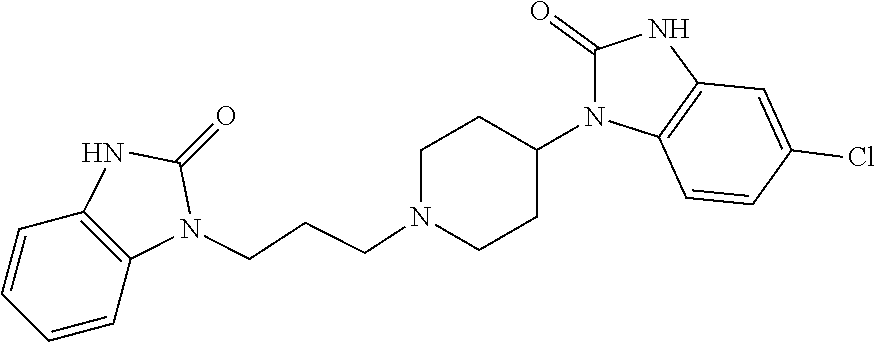Composition and use for the treatment of parkinson's disease and related disorders
a parkinson's disease and related disorder technology, applied in the field of parkinson's disease and related disorders, can solve the problems of inexorable loss of neurologic and psychiatric function, postural instability and various neurobehavioral disabilities, and the prevalence rate and societal cost are expected to increase exponentially, so as to enhance the tolerability of said da-agonists, the effect of increasing the dose of agonists and enhancing the antiparkinsonian
- Summary
- Abstract
- Description
- Claims
- Application Information
AI Technical Summary
Benefits of technology
Problems solved by technology
Method used
Image
Examples
third embodiment
said method is for the treatment of a patient suffering from of a PMND consisting of a PD-related disorder selected from the group consisting of DDS, FTLD, PSP, and CBD, with an effective daily dose of at least one AEsI, formulated in a pharmaceutical composition comprising said AEsI, selected from group consisting of ondansetron and pharmaceutically acceptable salt and solvates and prodrugs thereof, in an amount per unit form equivalent to from 2 mg to 32 mg of ondansetron base, and dolasetron and pharmaceutically acceptable salts and solvates and prodrugs thereof, in an amount per unit form equivalent to 25 mg to 200 mg of dolasetron mesylate; aprepitant and pharmaceutically acceptable salt and solvates and prodrugs thereof, in an amount per unit form equivalent to from 10 mg to 250 mg of aprepitant base, and rolapitant and pharmaceutically acceptable salts and solvates and prodrugs thereof, in an amount per unit form equivalent to 15 mg to 270 mg of rolapitant base; in combinatio...
example 1
[0516]The ability of a 5HT3-antagonist and of a NK1-antagonist for preventing the adverse effects of a DA-agonist in humans was tested.
[0517]To be enrolled in the study, participants the following inclusion / exclusion key criteria:
Key Inclusion Criteria
[0518]1. Male and female subjects aged 20-45 years old both ages included.[0519]2. Females of childbearing potential must agree to be abstinent or else use any two of the following medically acceptable forms of contraception from the Screening Period through 14 days after the study Exit Visit: condom with spermicidal jelly, diaphragm or cervical cap with spermicidal jelly, or intrauterine device (IUD). A female whose male partner has had a vasectomy must agree to use one additional form of medically acceptable contraception. Subjects must agree to practice the above birth control methods for 14 days after the final visit as a safety precaution.[0520]3. Females of non-childbearing potential, defined as surgically sterile (status post-hy...
example 2
[0562]The ability of domperidone to prevent the gastro-intestinal (GI) adverse effects (AEs) of pramipexole in humans is tested.
A Phase I study is conducted in subjects receiving a single oral dose of pramipexole dihydrochloride monohydrate (“pramipexole”) with or without a single oral dose of domperidone base (“domperidone”). The study is a single center study.
[0563]The objective of the study is to demonstrate that domperidone safely attenuates the gastro-intestinal side effects of pramipexole given in doses equivalent to or higher than those approved in the treatment of Parkinson's Disease or shown in clinical trials to be effective in the treatment of depression.
[0564]To be enrolled in the study, participants meet the following inclusion / exclusion key criteria:
Key Inclusion Criteria
[0565]2. Male and female subjects aged 20-45 years old both ages are included.[0566]2. Females of childbearing potential must agree to be abstinent or else use any two of the following medically accept...
PUM
| Property | Measurement | Unit |
|---|---|---|
| shape | aaaaa | aaaaa |
| DA | aaaaa | aaaaa |
| disorder | aaaaa | aaaaa |
Abstract
Description
Claims
Application Information
 Login to View More
Login to View More - R&D
- Intellectual Property
- Life Sciences
- Materials
- Tech Scout
- Unparalleled Data Quality
- Higher Quality Content
- 60% Fewer Hallucinations
Browse by: Latest US Patents, China's latest patents, Technical Efficacy Thesaurus, Application Domain, Technology Topic, Popular Technical Reports.
© 2025 PatSnap. All rights reserved.Legal|Privacy policy|Modern Slavery Act Transparency Statement|Sitemap|About US| Contact US: help@patsnap.com

